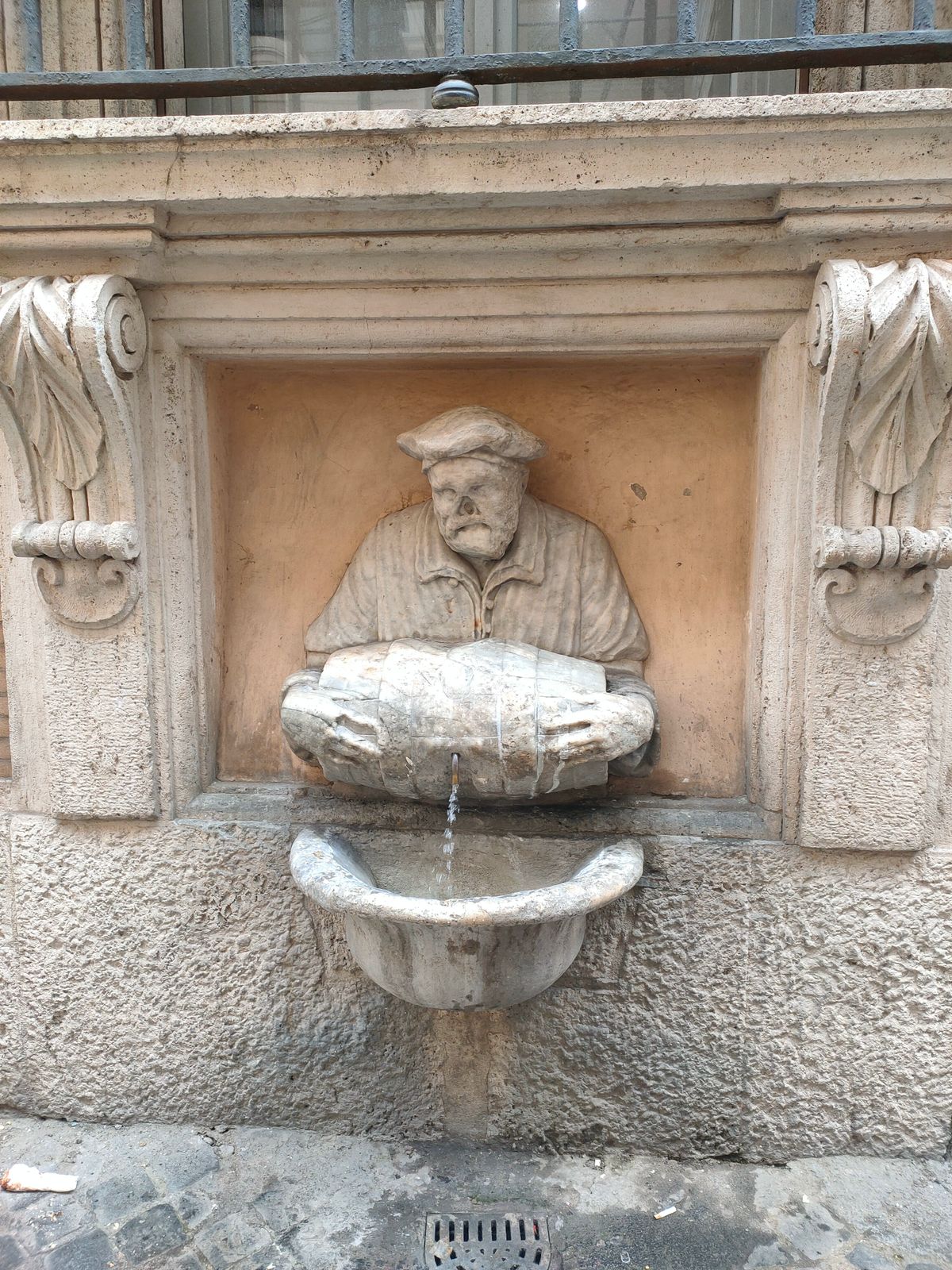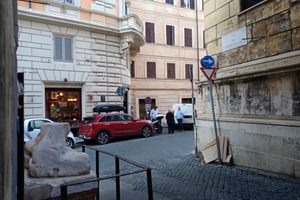About
In the centuries before the reconstruction of Rome's water supply system, humble acquaroli would take water from the Tiber to the city's inhabitants to be sold on the streets. Eventually, they formed a corporation, known as Corporazione degli Acquaroli, which acted as a guild of sorts.
The statue was designed by Jacopo del Conte during the late 16th-century for the Corporation and depicts an acquarolo holding a barrel. It's also commonly referred to as the Porter and was originally located on Via del Corso before being moved to its present location, on Via Lata, in 1872.
You will notice that the man's face is badly damaged. It's long been believed that the statue's resemblance to Martin Luther, in the age of the Counter-Reformation, drew far too much attention from passersby. They would toss who paving stones, or sanpietrini at the face of the statue.
The statue is listed among Rome's "talking statues," sculptures that were used to display anonymous political satire and expression.
The talking statues of Rome are also known as the "Congregation of Wits". These were a collection of six statues that were used as an anonymous outlet for political discontent. In the 16th century, poems or witticisms about local politics and politicians were posted on the statues as a form of a local newsletter. It continues to this day with modern pasquinades frequently glued to the base of the Pasquino statue.
Unlike the other talking statues, Il Facchino is relatively modern rather than dating back to ancient Rome.
Related Tags
Flavors of Italy: Roman Carbonara, Florentine Steak & Venetian Cocktails
Savor local cuisine across Rome, Florence & Venice.
Book NowCommunity Contributors
Added By
Published
August 28, 2019
Updated
April 11, 2022































